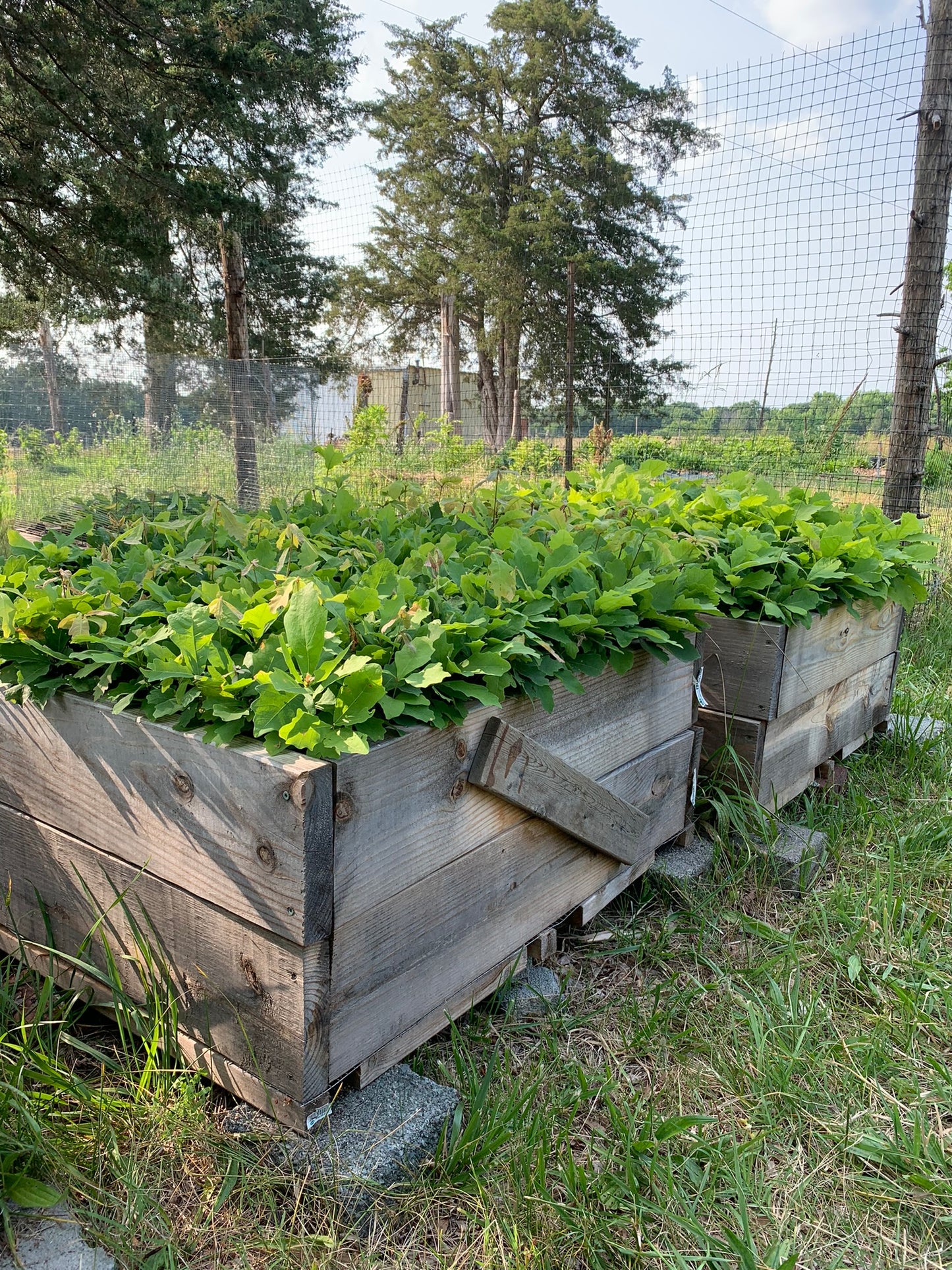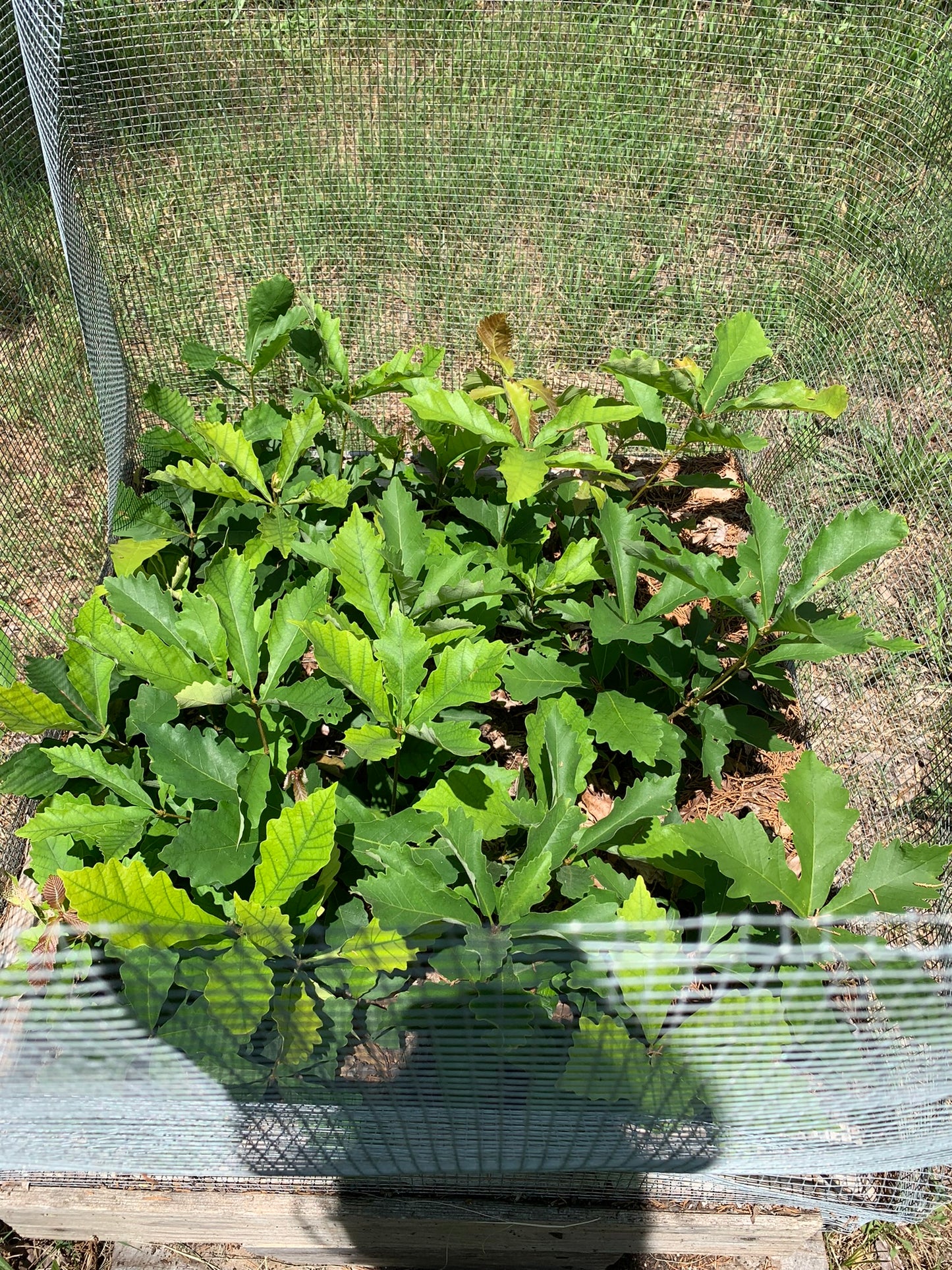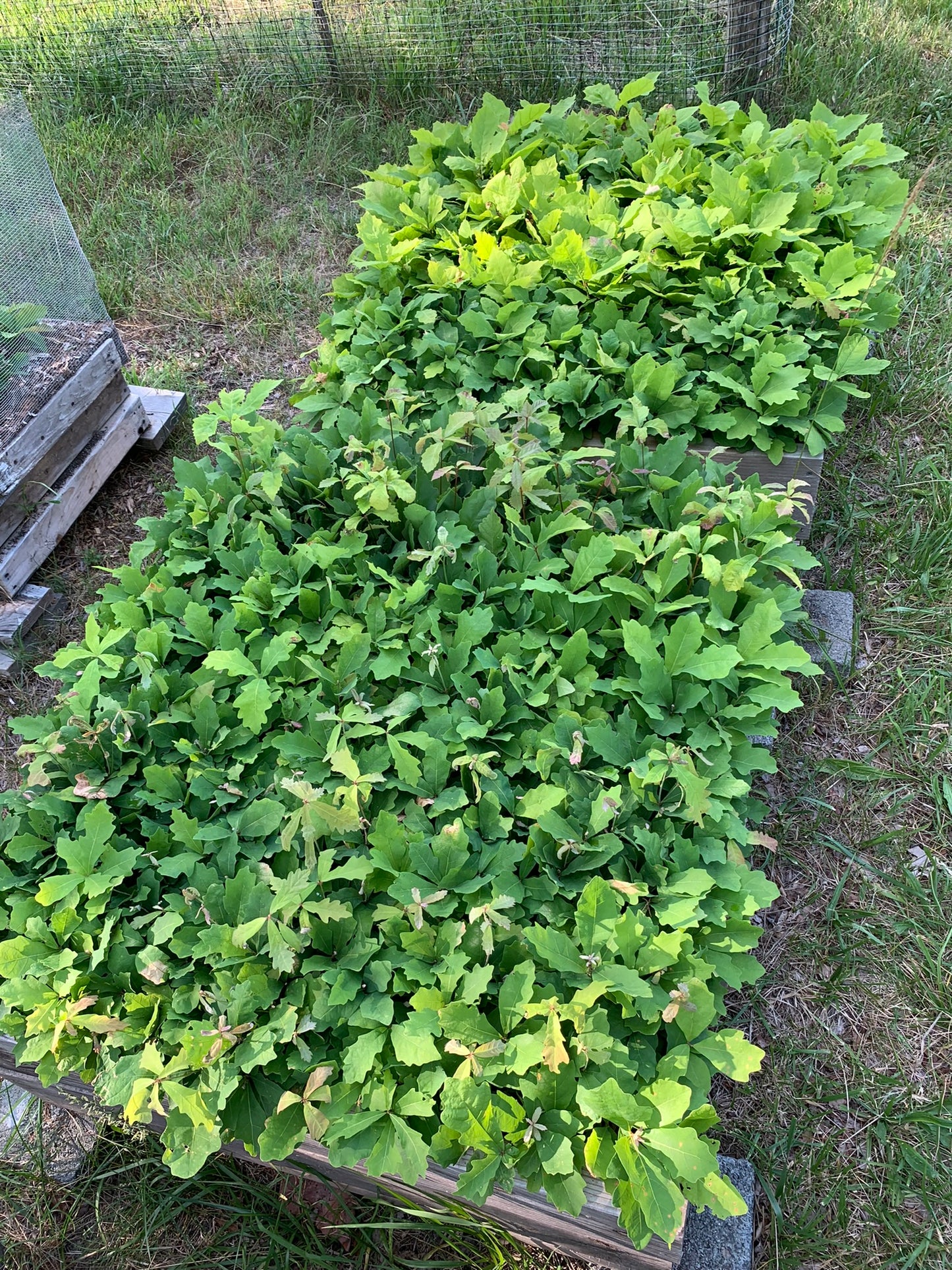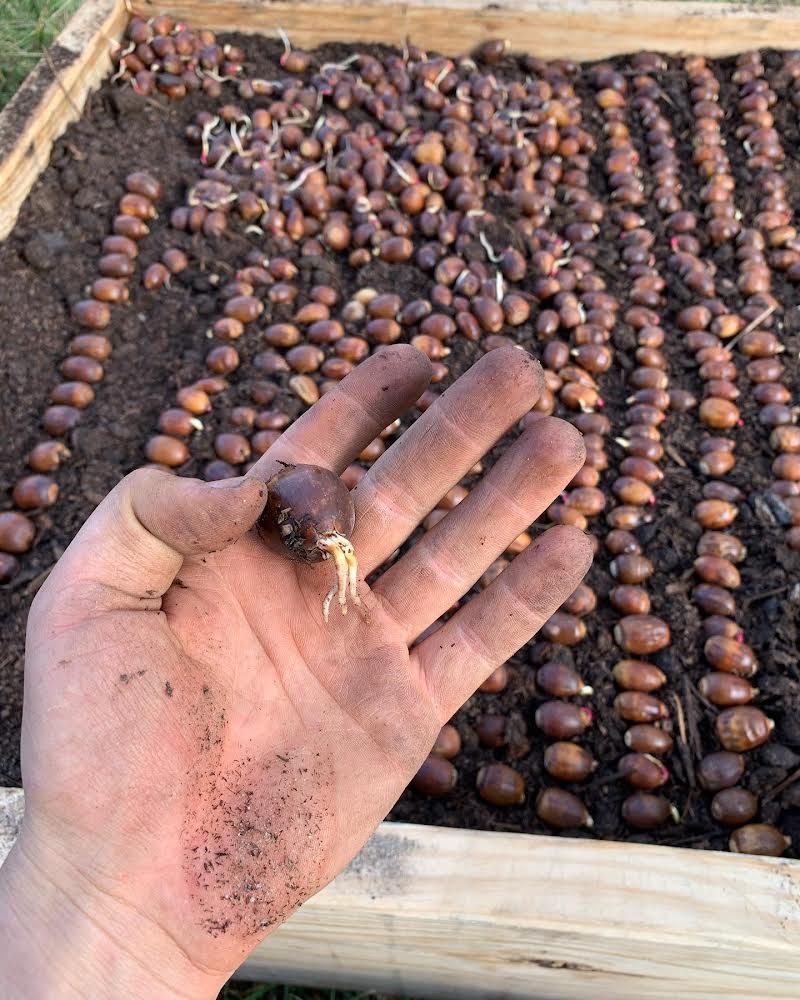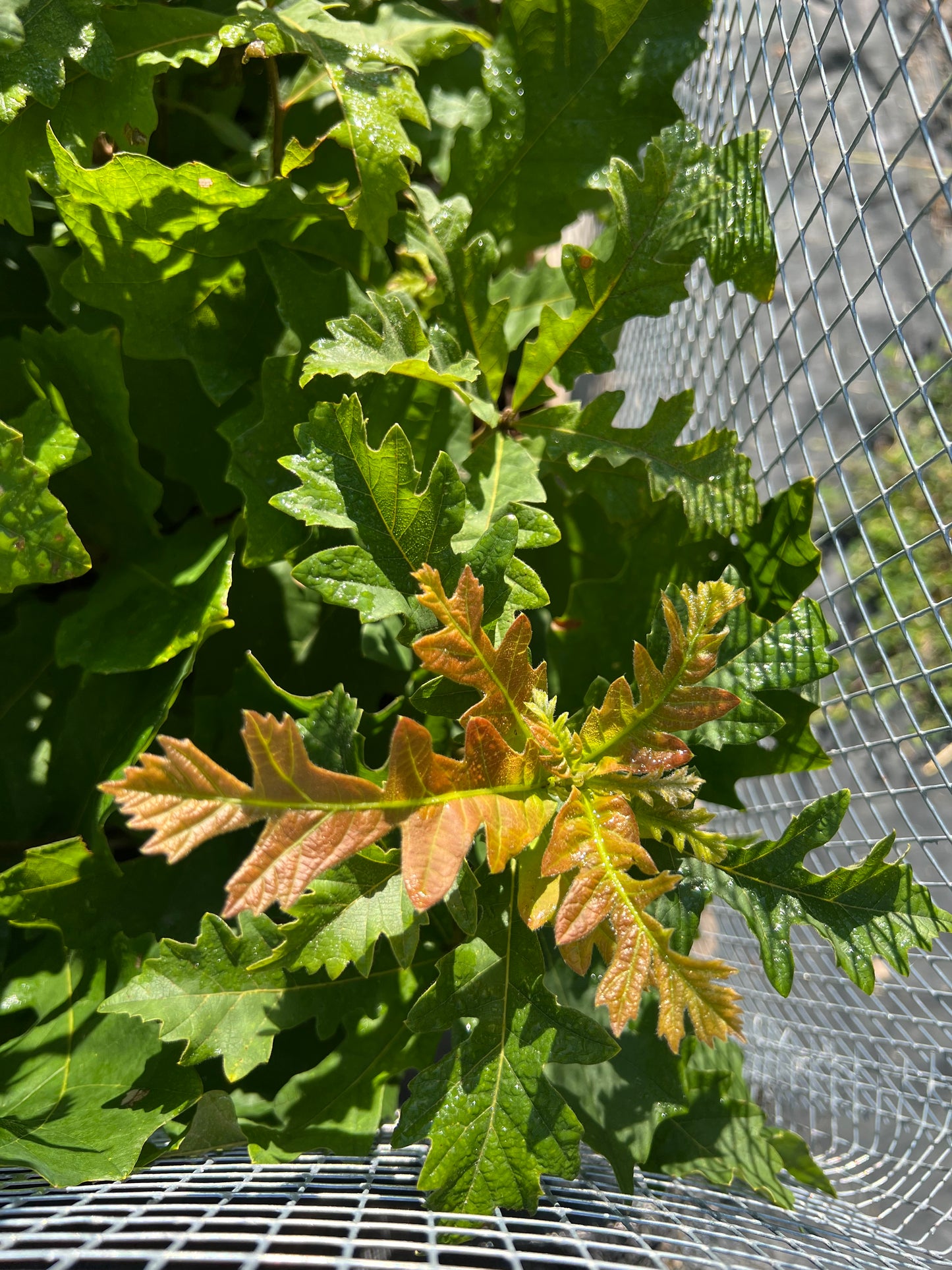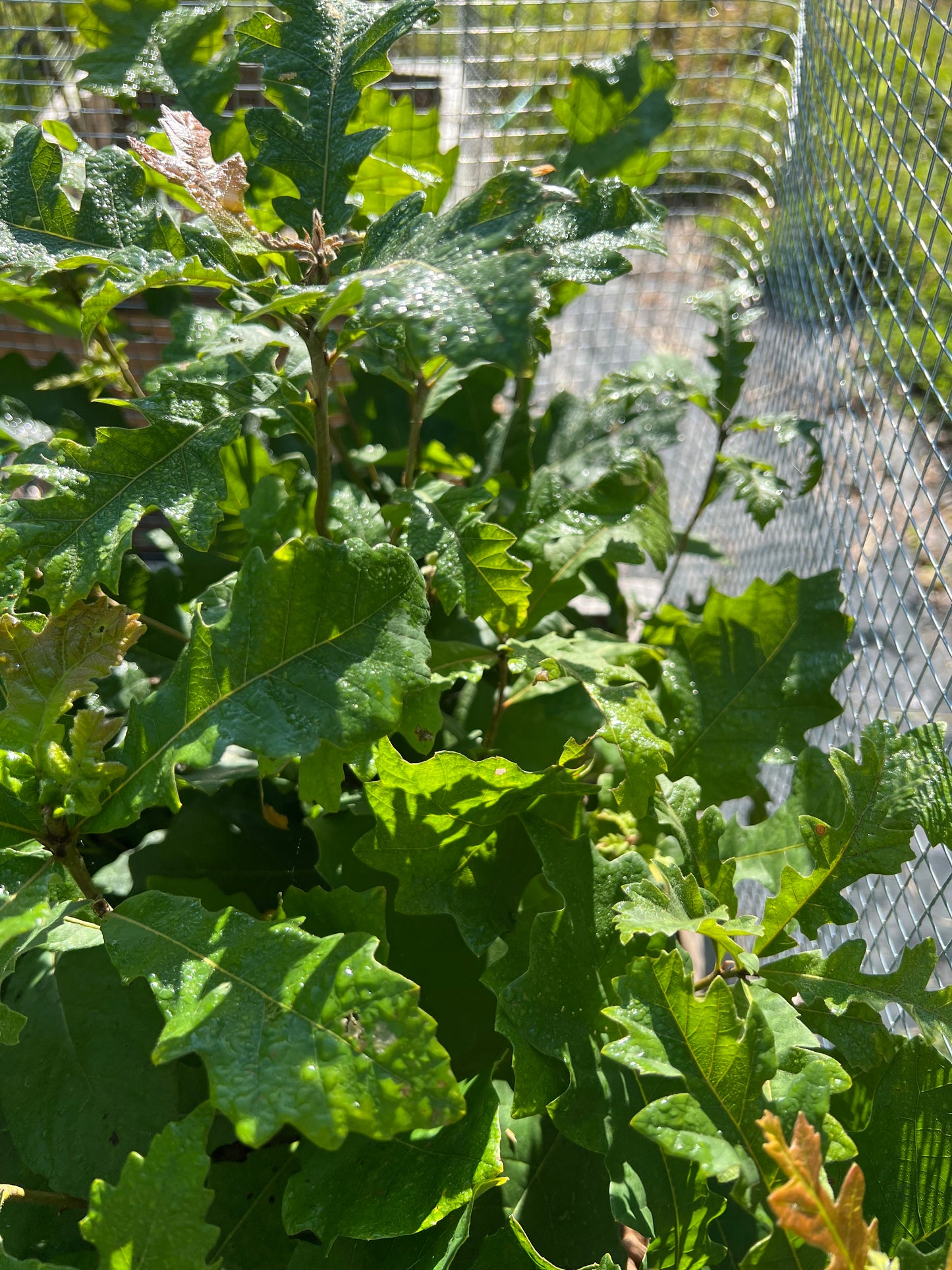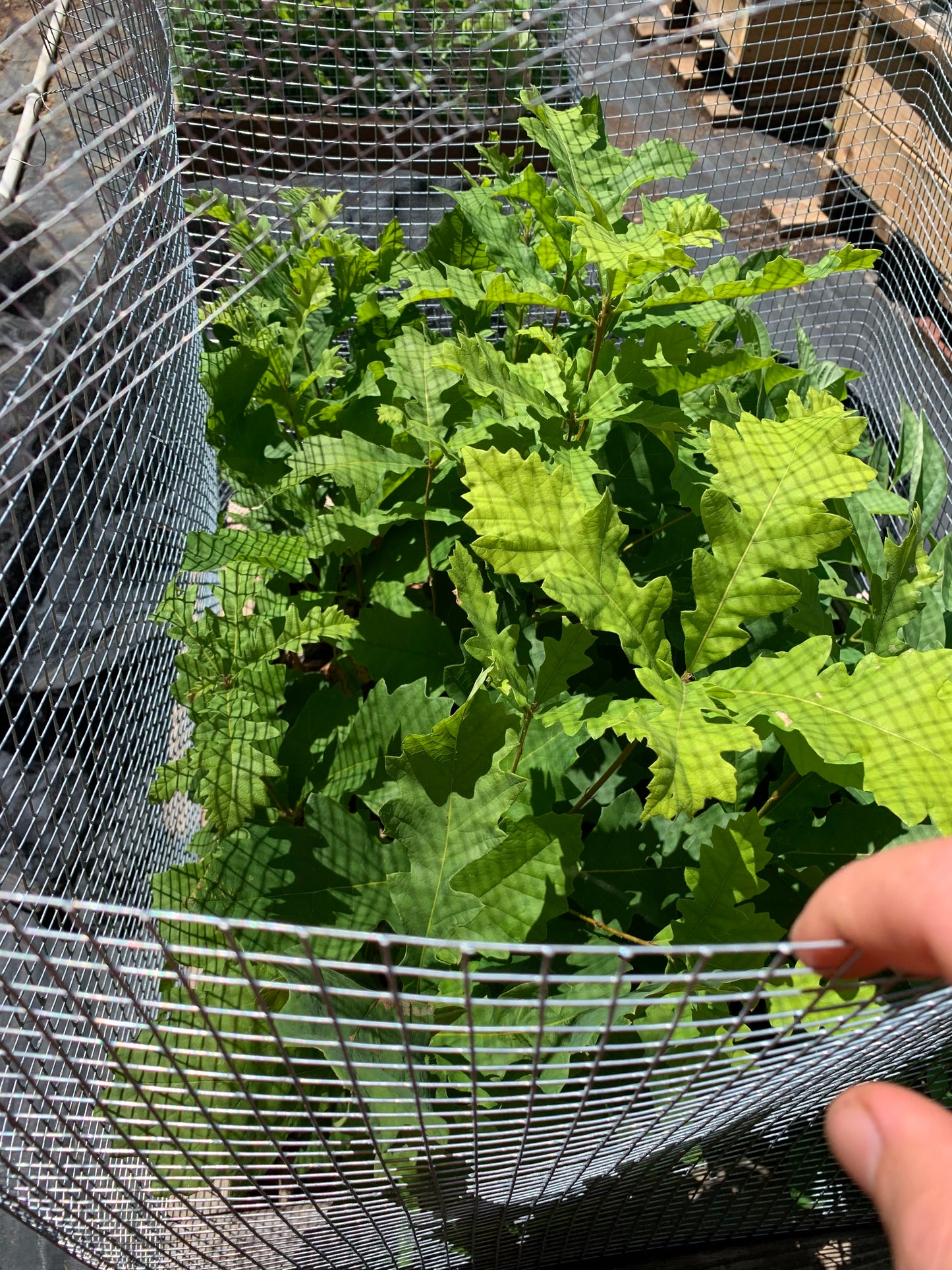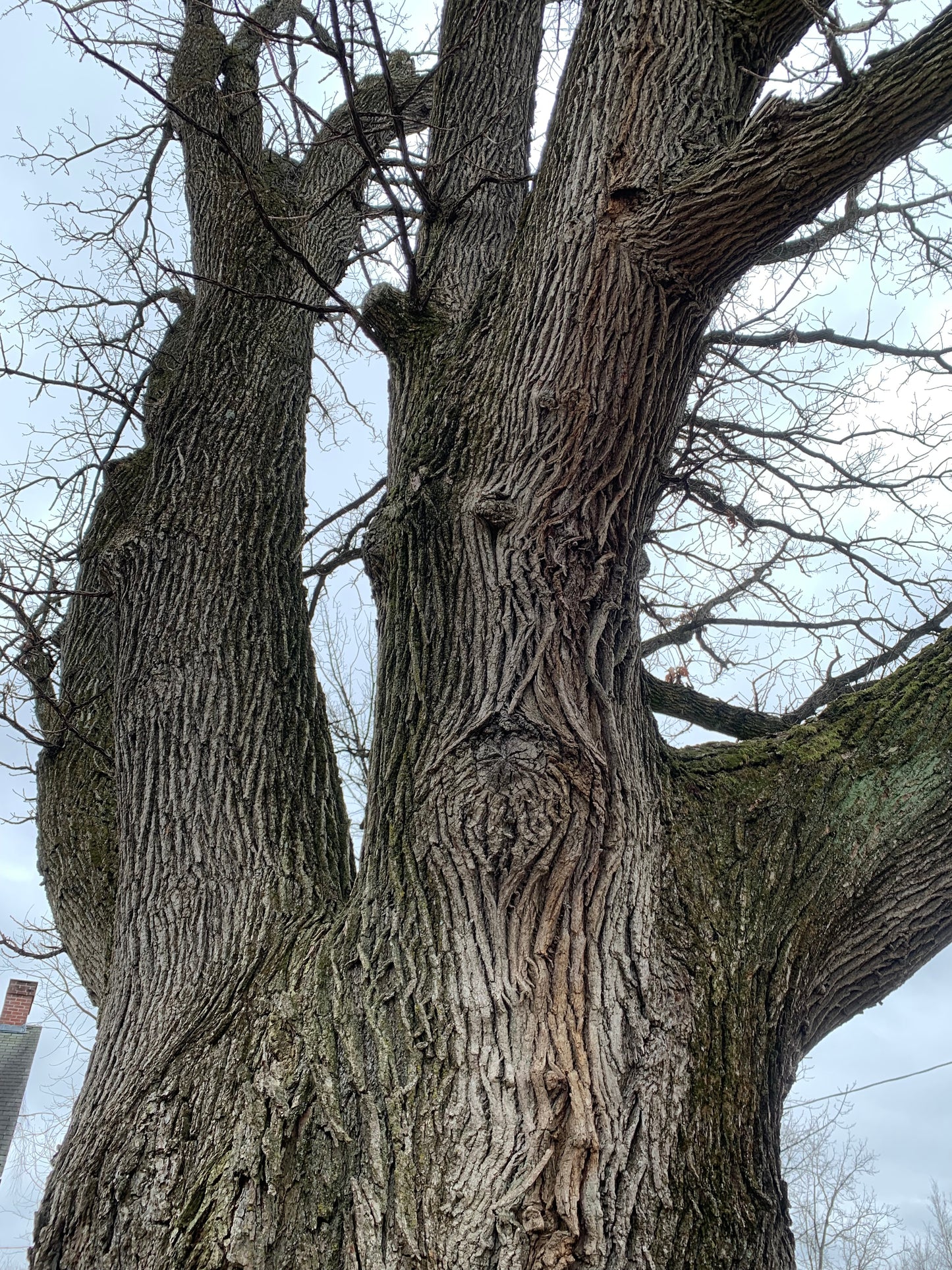Living Soil Tree Farm
Oaks
Oaks
Couldn't load pickup availability
Oaks
BARE ROOT TREES WILL BEGIN SHIPPING OCT/NOV.
There are many native oak species and they are all wonderful. Oaks are a keystone species in many regions. A keystone species can support a significantly wide range of wildlife. Keystone species are a foundational element to an ecosystem, without them the ecosystem suffers significantly. If you want to support wildlife from bugs to mammals you can't go wrong with oak trees. Oaks are often long lived and make beautiful specimen trees. They make wonderful shade trees with wide reaching canopies and the ability to handle harsh conditions.
Humans have been in relationship with oak trees for a very long time. Entire civilizations have relied heavily on calories from acorn flour and many people today still do. Acorn flower is nutritious, local, and extremely tasty. We love to make chocolate black walnut cookies with acorn flour. Its also gluten free! We are offering several oak selections this year please read below to learn more.
Oaks are an incredible ally to us all. For various reasons oak habitat is in decline all across the southeast and other parts of the country. The main reasons for this are land clearing for new construction and logging practices which favor clear cuts and pine plantations. This is easily reversed by planting more oak trees, strategically. You can take part in bringing back important oak habitat!
Many oak species do well in urban environments. Oaks do best in full sun but while young they can hang in the shade waiting for the sun for a long time. Slowly inching up and getting ready to replace older trees when they fall. On a larger scale we should look at incorporating more oaks into our logging practices. This is not to say that pine doesn't have an important role to play but the balance is off currently. It is also very important to leave mother oak trees in forest systems instead of doing a total clear cut. This ensures there is seed production to produce the next generation of oaks.
All oak species can be divided into one of two categories, white and red. Within each category there are many species and they can often hybridize with each other. This year we are offering several selections of oak. All are native to NC & VA.
Bur Oak - "Alwood"
Bur oak produces some of the largest acorns of any oak native to this part of the world. They are classified as a white oak and like the other white oaks the acorns tend to sprout in the fall. The acorns are generally low in tannins making them easy to leach for flour production. The trees themselves are highly adaptable and incredibly fast growing. Our bur oaks this season are one year old and 1-2 feet tall.
Our mother tree for 2025 is a bur oak on the campus of Virginia Tech was planted in 1895 by professor William Bradford Alwood. Alwood was a well-known figure in the agricultural world at the time. This oak tree is only part of the legacy he left behind. Walking under this oak is a transformative experience. Its limbs reach out wider horizontally than its trunk extends vertically. Some of the limbs come close to touching the ground. The space that this one tree takes up is mind boggling. On average acorns from this tree weigh about 10 grams. To give a reference point for folks who have not worked with bur oak before, 10 grams per acorn is in the middle of the spectrum. Some trees are known to produce acorns averaging 20 grams each or more. The acorns are oval shaped. We have found bur oaks in other areas that tend to be more round but this tree makes oval shaped acorns.
In 2024 we offered bur oak from seed gathered by our friends at Feralwood nursery in Western NC, we highly recommend checking out their work!
Black Oak
Black Oak is a hardy oak species with a wide distribution on the east coast and across the mid west. We are just beginning to work with black oak here at the nursery. Typically classified as a type of red oak, the black oak makes medium sized acorns. Based on conversations with other nutty friends it seems that black oak has a high potential as both a flour and oil crop. They are beautiful trees, drought hardy once established, and of great importance to wildlife. As we deepen our relationship to the black oaks I will be sure to update this listing with more of our findings.
White Oak - BARE ROOT
Our white oak selection is comprised mostly of the standard white oak (Quercus alba). It is possible that some of the trees in this mix are results of natural hybrids with other members of the white oak group. White oak acorns are loved by wildlife and are an important food source in the fall. These acorns sprout a taproot in the fall which is important to keep in mind if you intend to grow white oak from seed. Generally white oak acorns have a lower tannin content which makes them easier to leach when making flour. White oaks can live extremely long lives. They do well in community with other trees or as stand alone trees in fields. White oak wood is very rot resistant and is an excellent building material. Although white oak acorns are lower in tannins they are also lower in fat than red oak acorns.
Northern Red Oak - BARE ROOT
Northern red oak acorns are an important wildlife food in late fall and into winter. Red oak have higher levels of tannins generally. These tannins degrade and leach out over winter and wildlife sometimes prefer to wait to eat them until later in the season (compared to white oak acorns which they eat in early fall). Some people prefer red oak acorns for flour despite the higher tannin content because red oak acorns tend to have higher fat content. Northern red specifically has rather large acorns. Northern red oak is a fast growing large tree. In VA & NC we are at the southern extent of the range for this tree. Climate change is beginning to push their populations northward. Although they are still common in the landscape here they are dying of various types of rot at a rather fast pace. Many folks site the warming climate as a main driver for this.
Chestnut Oak - BARE ROOT
Chestnut oak thrives in a slightly narrower set of conditions. Chestnut oak can thrive well on shallow rocky soils. The acorns from these trees are also vital wildlife food. About half of our chestnut oak seed came from the triangle area while the rest came from Blacksburg VA. Chestnut oak drop massive acorns but they seem to be difficult to make into flour. Fully leaching the tannins from chestnut oak proves to be difficult. Let us know if you have a different experience! There is some debate as to chestnut oak's classification as red or white. I have heard good arguments from both sides. Sometimes our defining lines fall short of the reality of nature.
Willow Oak - BARE ROOT
Willow oak is a member of the red oak category that is adapted to wet bottomland conditions. This makes willow oak tolerant of compacted soils and an excellent choice for urban sites. Many of the street trees in Durham are willow oaks, some are massive and close to 100 years old. They drop rather small acorns that are consumed readily by wildlife. Willow oak are a tough tree, they can survive and thrive in places other trees could not. That does not mean you should neglect them! Willow oak will do better with quality tree care. All that said willow oak are relatively short lived for an oak. Urban trees usually survive for 70-100 years while trees grown in better soils may live a bit longer.
Water Oak - BARE ROOT
Highly adaptable but short lived compared to other oaks. In form it resembles willow oak. Water oak can grow in wet or dry soils and produces small oil rich acorns. It is a member of the red oak group. Known to have weaker wood than other oak species. It is relatively short for an oak typically maxing out between 50-70 feet.
Materials
Materials
Shipping & Returns
Shipping & Returns
Dimensions
Dimensions
Care Instructions
Care Instructions
